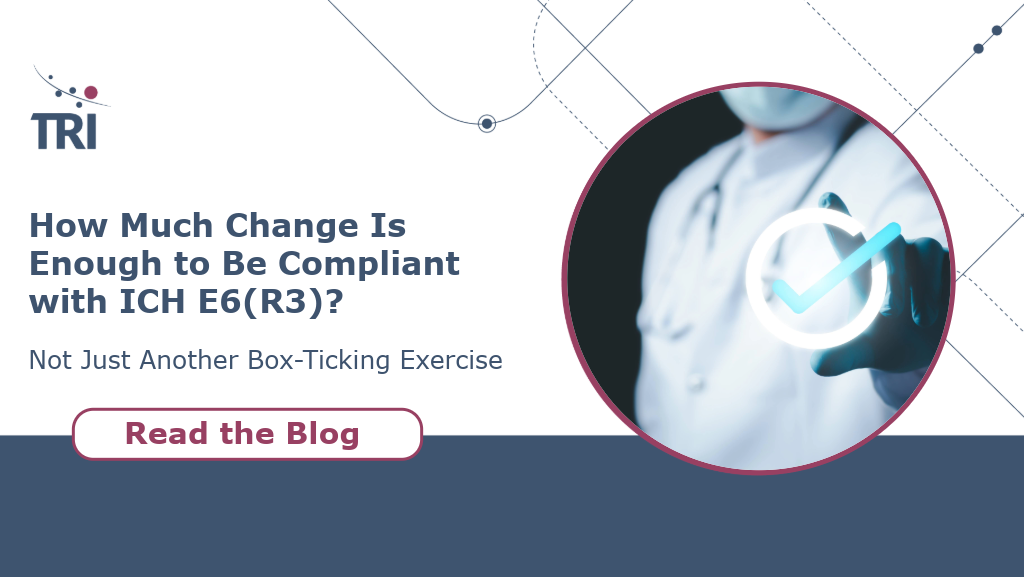How Much Change Is Enough to Be Compliant with ICH E6(R3)?

Not Just Another Box-Ticking Exercise
The third revision of the ICH E6 Good Clinical Practice Guideline: E6(R3) has officially landed on everyone’s radar. 87% of industry stakeholders claim at least some familiarity, according to the latest Avoca Industry Survey. But with familiarity comes the big question: How much change is actually enough to be considered compliant, and how do clinical teams translate these insights into everyday practice?
The ICH E6(R3) Practical Compliance Checklist
Drawing on the direct feedback from the Avoca survey, let’s break down compliance into a stepwise, actionable checklist for your organization.
1. Risk-Based Approach
- Embrace proactive risk evaluation: Implement processes that make risk-based approaches a daily habit. Collaboration between sponsors and sites is the backbone of risk-based quality management (RBQM) and compliance.
- Prioritize what counts: Focus on critical data and processes that directly impact patient safety and trial reliability. A clear, simple risk assessment and mitigation plan should be integrated from initial planning through study execution.
- Document everything: Keep detailed logs for delegation, oversight, and risk management activities. This auditable trail is required by E6(R3).
2. Build Quality from the Start
- Plan with QbD in mind: Design protocols and systems to prevent foreseeable problems, focusing on “critical to quality” (CTQ) factors. The Avoca survey shows 4 out of 5 respondents anticipate a quality boost through strong QbD.
- Reduce site and patient burden: Effective QbD is about reducing avoidable complexity and focusing effort where it truly matters.
- Engage cross-functional teams: Include input from all stakeholders, early and often, for design and review to reduce amendments, and support smooth operations
3. Integrity from Source to Submission
- Strengthen system reliability: Ensure electronic systems have audit trails, robust version control, and compliance with 21 CFR Part 11 and similar regulations.
- Prepare for inspection: Be able to clearly trace data origins and changes. Regulators will expect it.
- Centralize oversight: Sponsor and sites share responsibility for data integrity, meaning cross-organizational alignment on system requirements and best practices.
4. Technology Adoption
- Audit before buying: Don’t rush to replace every system, instead, assess current capabilities and target critical gaps first.
- Plan for integration: Ensure new or updated technology melds with existing platforms and workflows. Factor in extra time and resources for validation and training, as survey participants noted this is often underestimated.
- Minimize site burden: Choose tools that align with site workflows, clear interfaces and role-based training are essential for adoption without excessive disruption.
5. Training & Change Management
- Ongoing staff training: Regular, documented training is critical for both compliance and team confidence. Sites, in particular, anticipate a heavy lift in training principal investigators and coordinators.
- Change management: Don’t underestimate organizational resistance, establish a mindset of continuous improvement with feedback loops and incremental change.
The Bridge to Practical, Sustainable Compliance
As Avoca survey responses reveal, understanding and adopting RBQM principles remains the single most challenging aspect for many organizations. Why? Because RBQM is a shift, requiring every stakeholder to actively prioritize, and mitigate risk throughout the trial lifecycle.
Why Simplicity and Usability Matter
Traditional RBQM platforms often overwhelm with complexity. Modern solutions like TRI’s OPRA makes this transformation accessible for organizations large and small. OPRA’s modular design, built around core activities such as central monitoring and risk assessment & management, directly addresses common pain points:
- Transparency: Visualize changes and risks in real-time across teams (driving stakeholder buy-in).
- Efficiency: Prioritize resources where they matter most, delivering faster, better outcomes, with up to a 30% gain in operational efficiency.
- Adoption: Simple interfaces increase engagement, while built-in compliance means less time spent on documentation and more on actual trial improvement.
Crucially, the best RBQM platforms support your organization’s processes and people. They offer clarity and confidence in compliance, even as regulatory expectations continue to rise.
Your Path to E6(R3) Readiness
E6(R3) compliance isn’t about doing everything at once, it’s about making prioritized changes that lead to genuine, auditable improvement.
With the right approach and the right tools, compliance becomes less about just “how much change” and more about making the right changes, ensuring readiness for what comes next.
